




Dorsten History: -Station 8: Dorsten Market Square
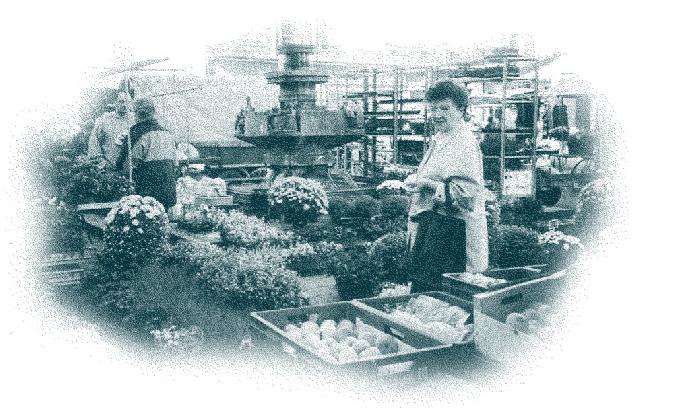
The old Market Square is the traditional centre of the one-time "Hanseatic City of Dorsten".The "Old Town Hall" which dates back to the Renaissance predominates the market square in the centre of the old town.
Lanes and narrow alleys lead to the main streets Recklinghäuser and Essener Straße and Lippestraße.
|
Pope Innocent IV returns to Rome after his exile in France.
| _ |
1251 |
_ |
Cologne Archbishop Konrad von Hochstaden grants the "Villa Durstine" its own town charter, so that a market can be held. |
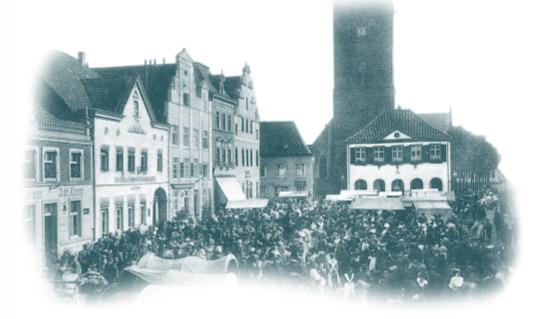 The market square at around 1900 |
1427 |
_ |
On the north-west corner of the market stands the "Steinerne Haus" (Stone House), the town hall. It is licensed to sell wine, according to the Dorsten charters. | |
|
The originally free city of Danzig recognizes the feudal sovereignty of Poland.
| _ |
1577 |
_ |
First official mentioning of the "Katharinenmarkt" (St. Catherine's Market) |
|
|
1641 |
_ |
The engraving by Merian shows the market square in its present layout. | |
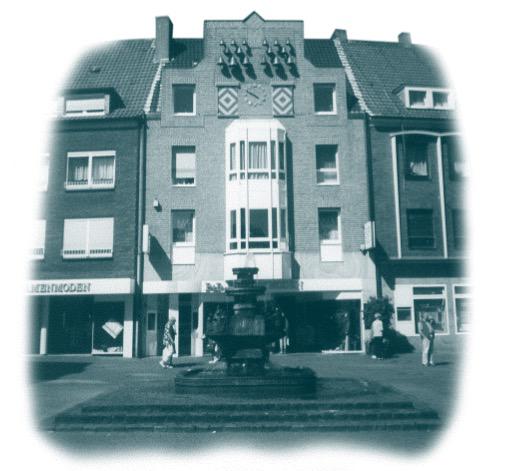 The chimes on the west side of the market square. |
17. Jh. |
_ |
In addition to the weekly market five different annual markets are held: | |
|
In England Stephenson constructs the first steam engine.
| _ |
1814 |
_ |
The Westphalian poet Maria Lenzen, née Sebregondi, is born in her parents' home at the market square. |
|
|
1919 |
_ |
Governmental units parade arrested Spartacists on the square. | |
|
|
1933 - 1945 |
_ |
The square is used for parades by the Storm Troopers (SA) and the German Armed Forces as well as for demonstrations by the National Socialists. | |
 The market square in the 1960s |
1962 |
_ |
The regional bank (Kreissparkasse) presents the town of Dorsten with the fountain designed by Sister Paula (Tisa von der Schulenburg). The fountain shows scenes from the town's history. | |
|
|
1978 |
_ |
A town festival marks the opening of the Dorsten pedestrian precinct. Before that cars were allowed in the market square. | |
|
Saarlouis and Eisenhüttenstadt are the first German towns to establish a German-German link.
| _ |
1986 |
_ |
The bronze fountain, designed by the Aachen artist Bonifatius Stirnberg, shows 4 important events of Dorsten history. |
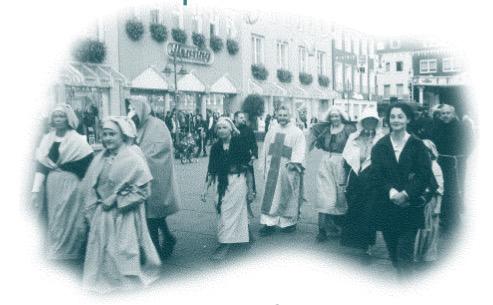 TheatreTimeTravel on the square |
2001 |
_ |
On the market square and in the adjoining streets a "TheatreTimeTravel" event marks the 750th anniversary of Dorsten. |
[zurück]
Daten und Fakten
Eröffnung - 31. Mai 2002
Adresse - Marktplatz - Markt 6
Geodaten - 51°39'37.0 ,6°57'52
Official opening
Dorsten's Mayor is delighted: This is the 8th Dorsten History Plaque. By the end of the year there might be 12.
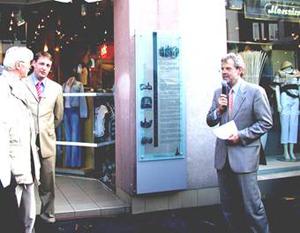
Photo (left to right) Klaus Friedrich, President LC Dorsten-Hanse, Stephan Reken, Manager of Mensing Company, Mayor L. Lütkenhorst.
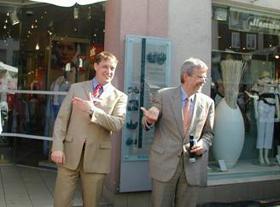
...VERY FRIENDLY" ... Stephan Reken, especially as he invites the Mayor
The new History Plaque is sponsored by "Bekleidungshaus Mensing".Groups involved: Gymnasium Petrinum History Club, Dorsten Culture and Learning Department, Werbeservice Tüshaus and Lions-Club Dorsten-Hanse.
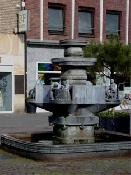
The bronze fountain, designed by the Aachen artist Bonifatius Stirnberg, shows four important events of Dorsten's history.
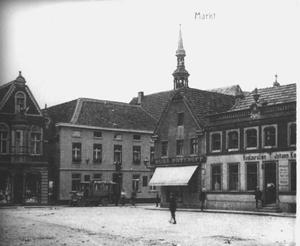
1427 - On the north-west corner of the market stands the "Steinerne Haus", Dorsten's Town Hall. The more than 100-year-old photo shows the former "Hotel König" (Schwarzer Adler/Black Eagle). According to Dr. Butzert, this building was Dorsten' Town Hall till 1797.

